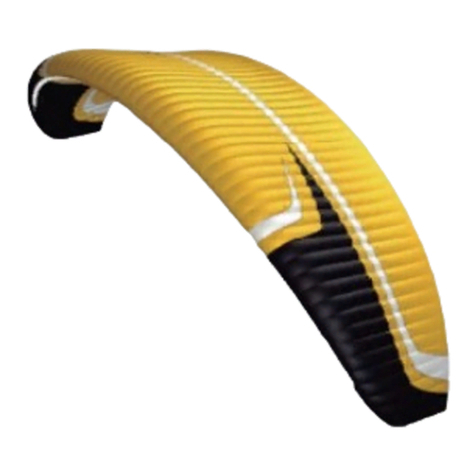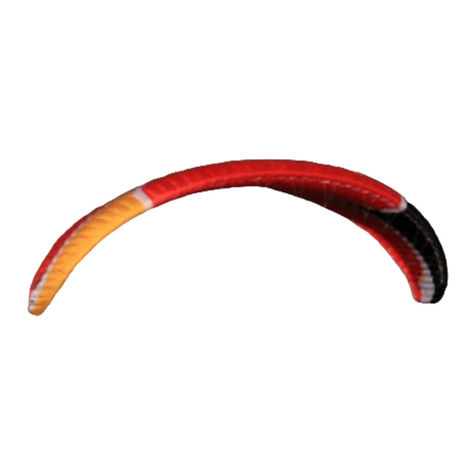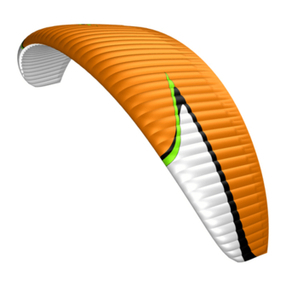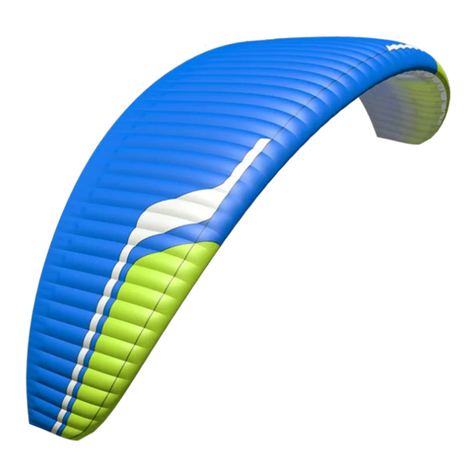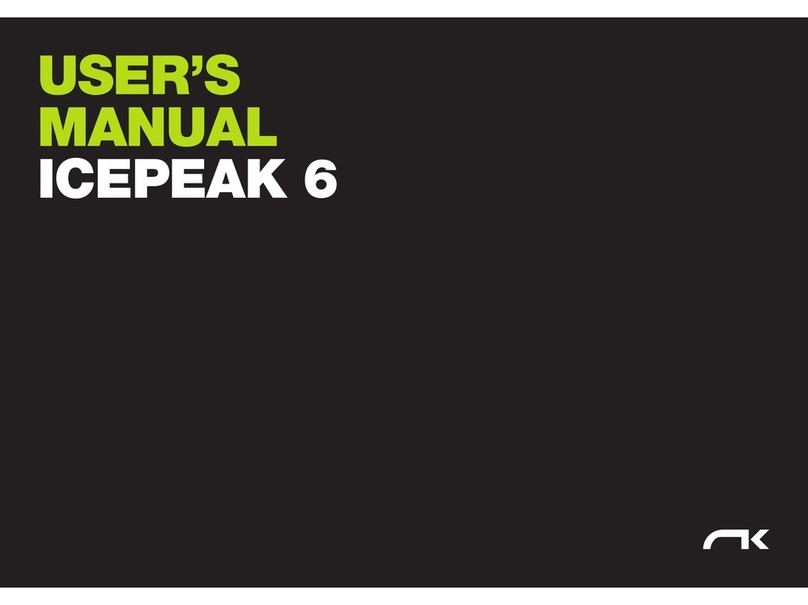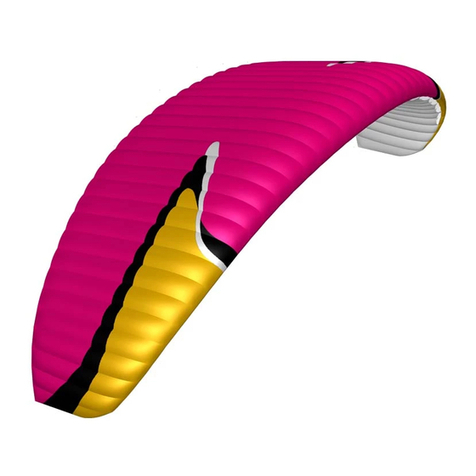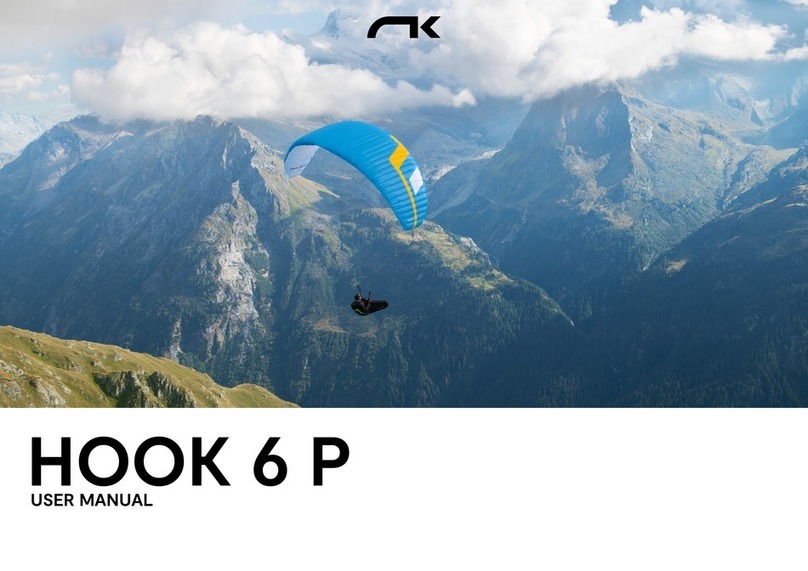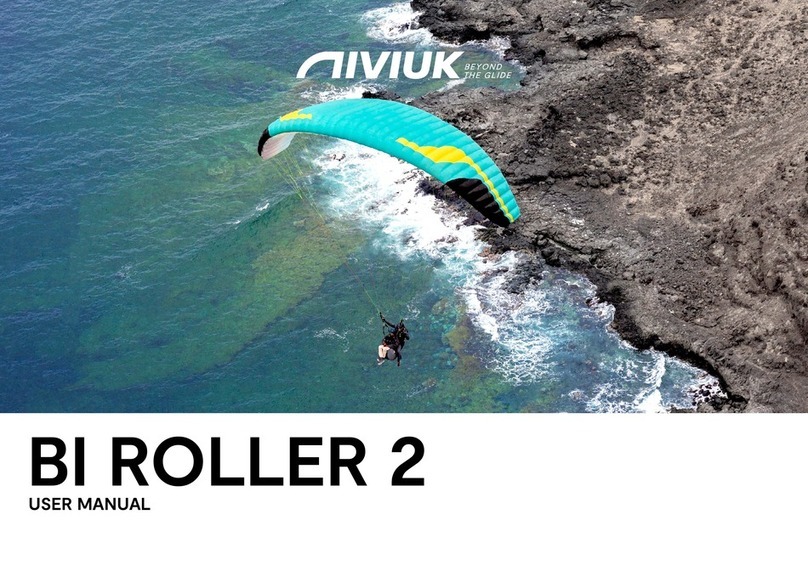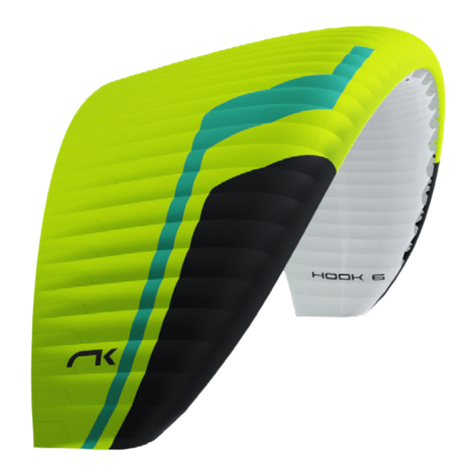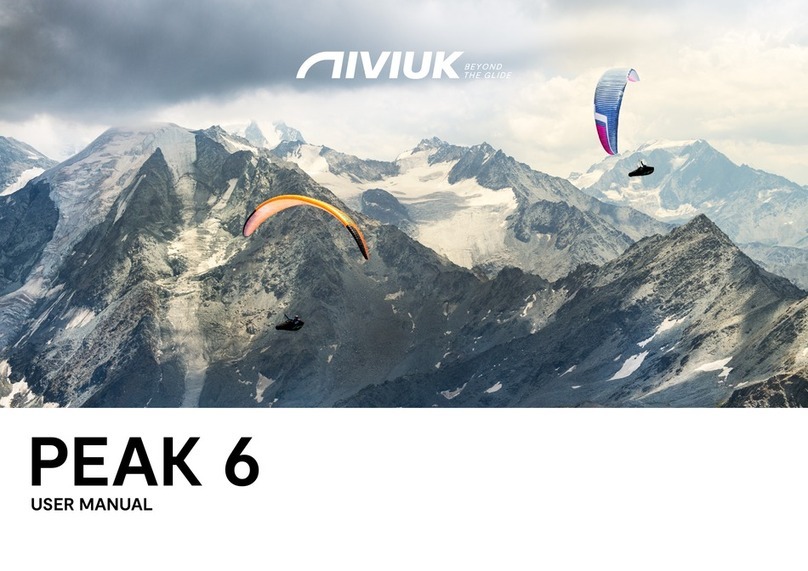
5
extraordinary quality.
It is lightweight; even lighter in ight and easy to pilot, with outstanding
turbulence buffering and a surprising range of speed for incredible glides.
1.4 CONSTRUCTION, MATERIALS
The IKUMA 2 has all the technological innovations used on other Niviuk
gliders and is built with the most careful selection of current materials. It
has all the current technology and accessories available to improve pilot
comfort whilst increasing safety and performance.
In the design of all Niviuk products the team aims to ensure development
and continuous improvement. The technologies developed in recent
years have allowed us to develop greater, better wings. It is in this
context that we would like to introduce the technologies included in this
new model.
RAM Air Intake - this system is characterised by the arrangement of the
air inlets, to ensure optimal maintenance of internal pressure. Thanks to
this design, we were able to reduce their size, while maintaining the same
air ow at all angles to improve laminar ow. More consistency across
the whole speed range and better performance without compromising on
safety.
Titanium Technology (TNT) - a revolutionary technique using titanium.
Using Nitinol in the internal construction provides a more uniform prole
and reduces the weight to gain efciency in ight. Nitinol provides the
highest level of protection against deformation, heat or breaks. The
leading edge is more rigid and the wing surface remains perfectly taut,
without creases or parasitic drag. This optimises glide in all phases of
the ight. Because the exible rods always return to their original shape,
the integrity of the prole is never affected. Nitinol provides the highest
level of protection against deformation, heat or breaks.
Structured Leading Edge (SLE) - the use of the SLE considerably
reduces the amount of Mylar which was used in previous Niviuk wings
and this also reduces the weight of the leading edge. Therefore it is
easier to inate this wing than a paraglider without this system.
3D Pattern Cut Optimisation (3DP) – the latest generation of wings
require a new fabric panel pattern and cutting system. Creating separate
panels for each of the sections at the front of the wing means the sail
fabric is more taut and crease-free. During the cutting, the optimal
orientation of the fabric section is selected, depending on its nal
location. If the fabric pattern is properly aligned with the axes of load, it
suffers less deformation after repeated use, to the long-term benet of
the leading edge.
3D Leading Edge (3DL) - adding an extra seam to the longitudinal
axis of the glider helps, on the one hand, give more consistency and
volume to the prole (a more efcient 3D contour) and on the other, joins
and shapes the leading edge panels. The fabric is guided by the panel
position to ensure fewer creases and better load distribution. The result
is a cleaner prole, which benets the wing in terms of performance and
durability.
Structured Trailing Edge (STE) - Optimises the prole without
deforming it. The circulation of the air is more uid, ensuring a cleaner
airow. When changing the angle of attack or when accelerated, the
prole remains more uniform and the after braking, the wing returns to
trim more progressively, faster and more actively.
Drag Reduction Structure (DRS) - The trailing edge has been reinforced
with small ribs in order to distribute the pressure more evenly. This results
in excellent manoeuvrability and greater control and precision.
Radial Sliced Diagonal (RSD) - A reinvention of the wing’s internal
structure. This new design is based on individual diagonal panels
arranged in radial form, which increase the efciency of the internal
